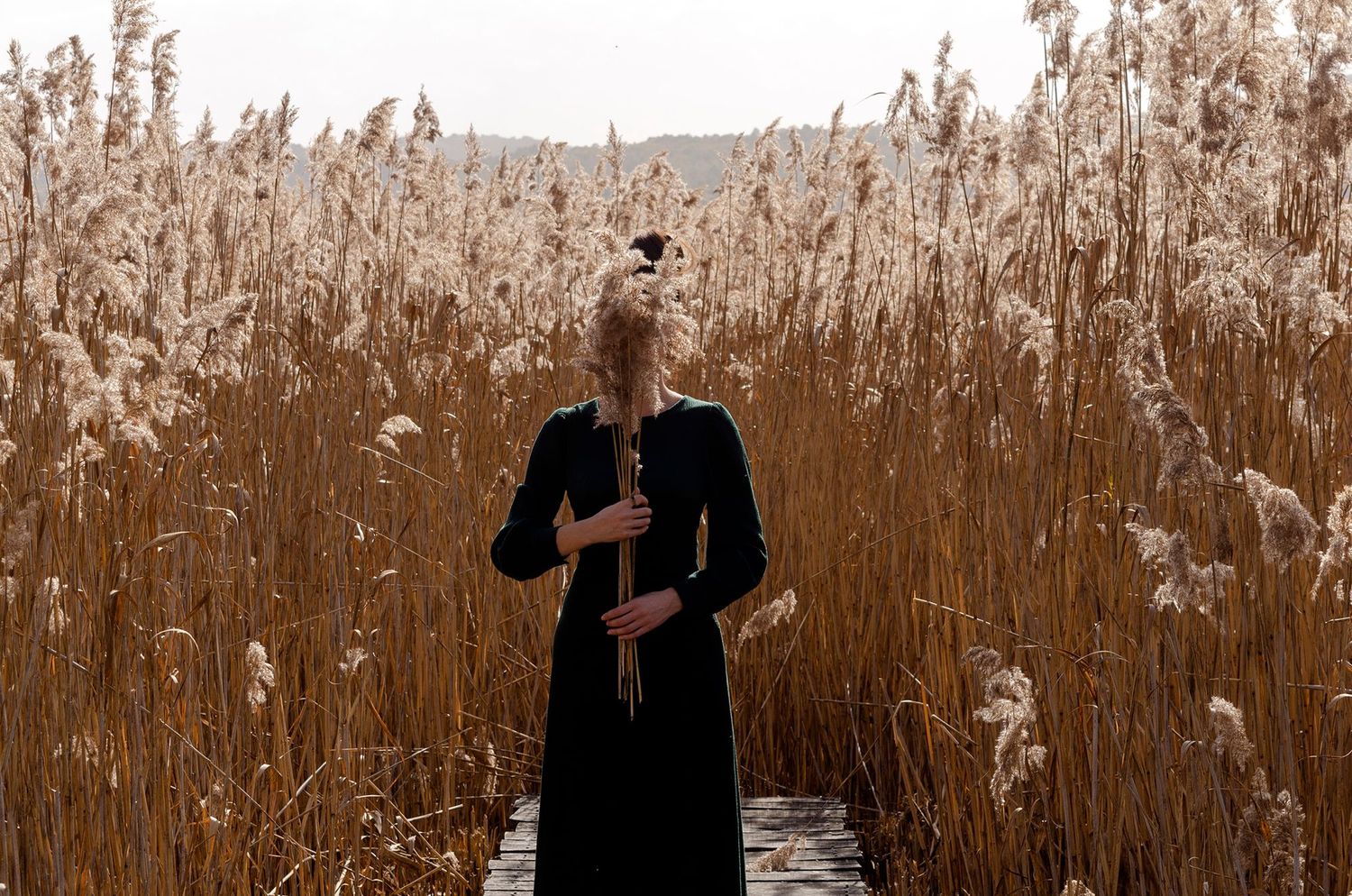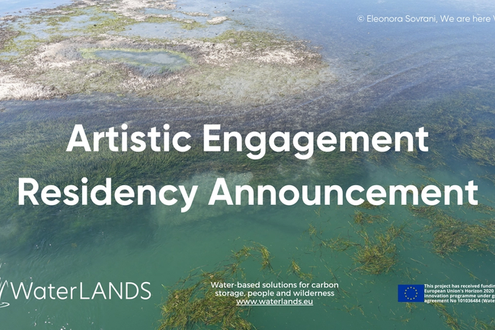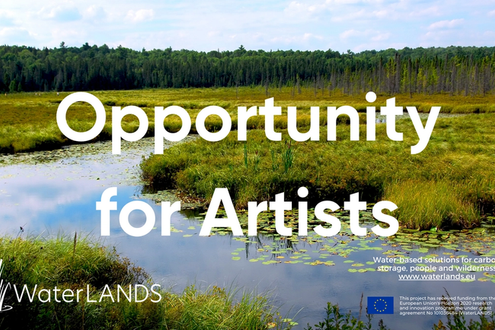Cover photo: in the tall reeds at the Dragoman Marsh, by Stefan Domuzov.
Introduction
The first year of the WaterLANDS Artistic Engagement Residency programme has sped by. The artists have all been busy exploring the sites, meeting the Action Site team members, engaging with communities and stakeholders on all sides.
This year is about tentative exploration and discovery, but already insights from the artists shed light on the process of restoration in unique and interesting ways. Just as the sites all have their own unique characteristics, histories, communities and challenges, the artists come to the residency with different practices and perspectives.
The artists and WaterLANDS team have had some meetings online to start the process of getting to know each other and begin knowledge sharing and collaborations across the sites. A group trip is being planned in Spring 2024 where the artists can spend time together and learn about each others’ work and visit some wetlands as well.
We are supported in the programme by Dr Alexandra Ross, Lecturer in Contemporary Art and Curation at the University of Glasgow who is advising on curatorial aspects of the scheme.
Shane and Caitriona spoke about the residency programme at the Power to the Peatlands conference in Antwerp on September 19, 2023, as part of a workshop organised by the Sensing Peat initiative at Michael Succow Foundation and Greifswald Mire Centre. Sensing Peat is an interdisciplinary project that, in the spirit of the Venice Agreement (2022), addresses the culturally and historically shaped artistic narratives and cultural practices surrounding peatlands.
Read on for updates from each of our WaterLANDS artists-in-residence, or learn more about the project's work to increase engagement through merging of arts and science in our Arts and Science Green Deal Success Story.
Elo Liiv, Estonia
Elo has been exploring the three Estonian sites that are part of the WaterLANDS project, Kikepera, Lavassaare and Kõrsa. She has been researching the heritage of the sites and learning about the sustainable maintenance of these bogs. Next year she plans to start creating an art piece based on what unites those three sites.
“I see these three sites as a ´holy trinity´ - spirit, body and mind. Changes we would like to make in this world need our work and investment. We can't change or rechange anything working only with one of them, we need to work equally with all three. In Estonian heritage nature is considered a living creature, it has spirit, mind and body. Society has forgotten its roots and only uses and connects itself with the body of nature.”
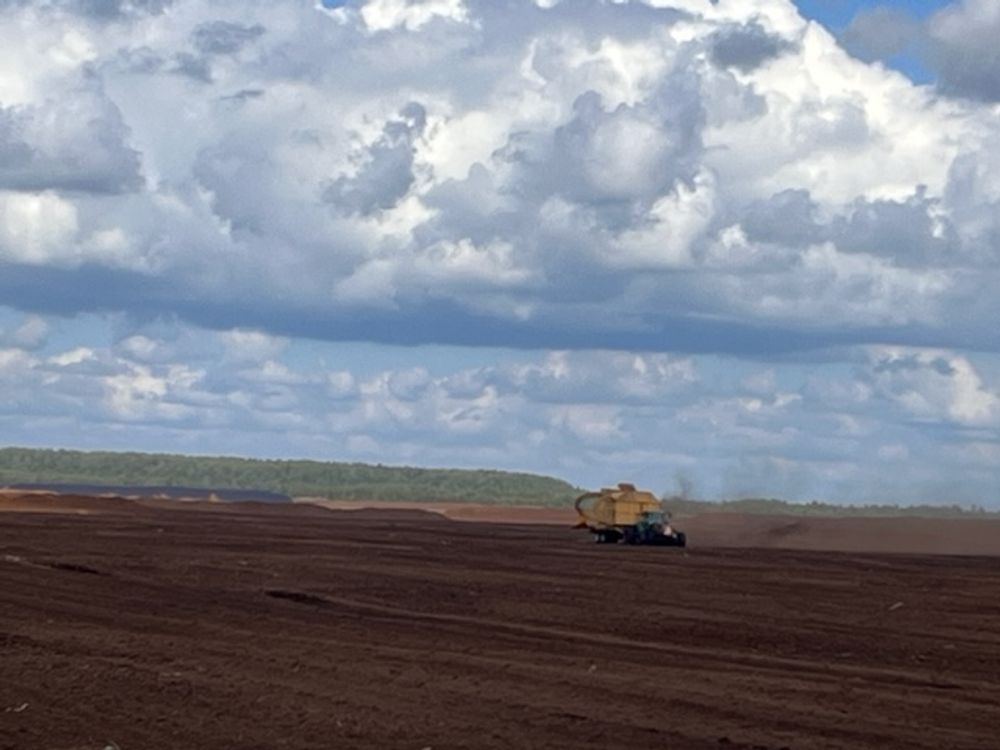
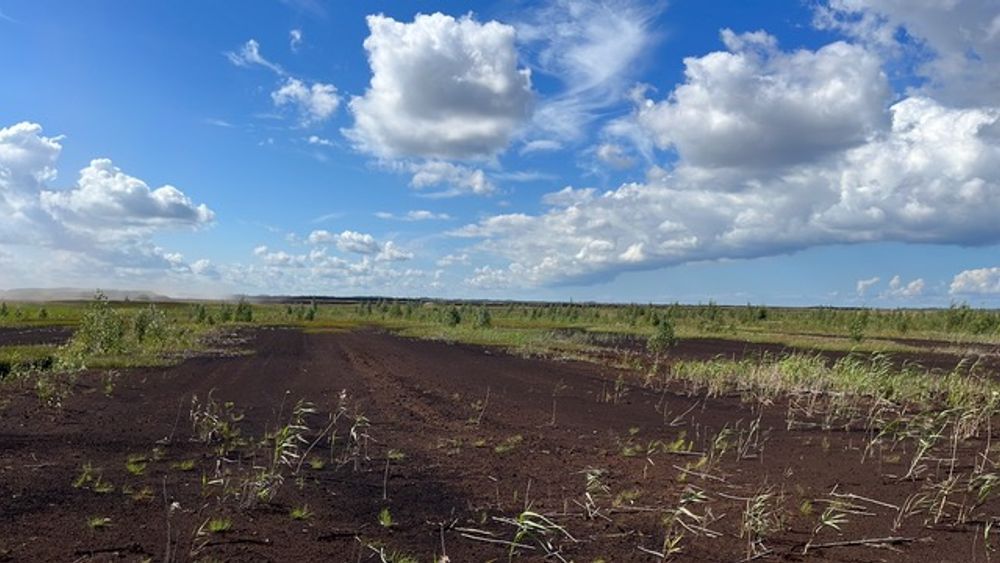
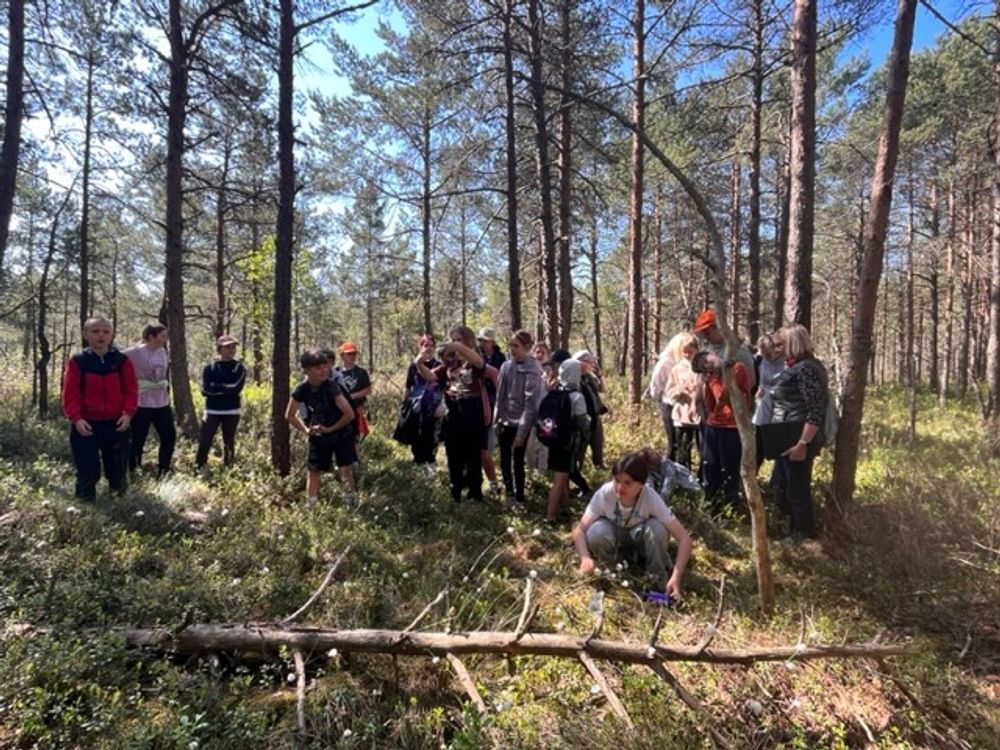
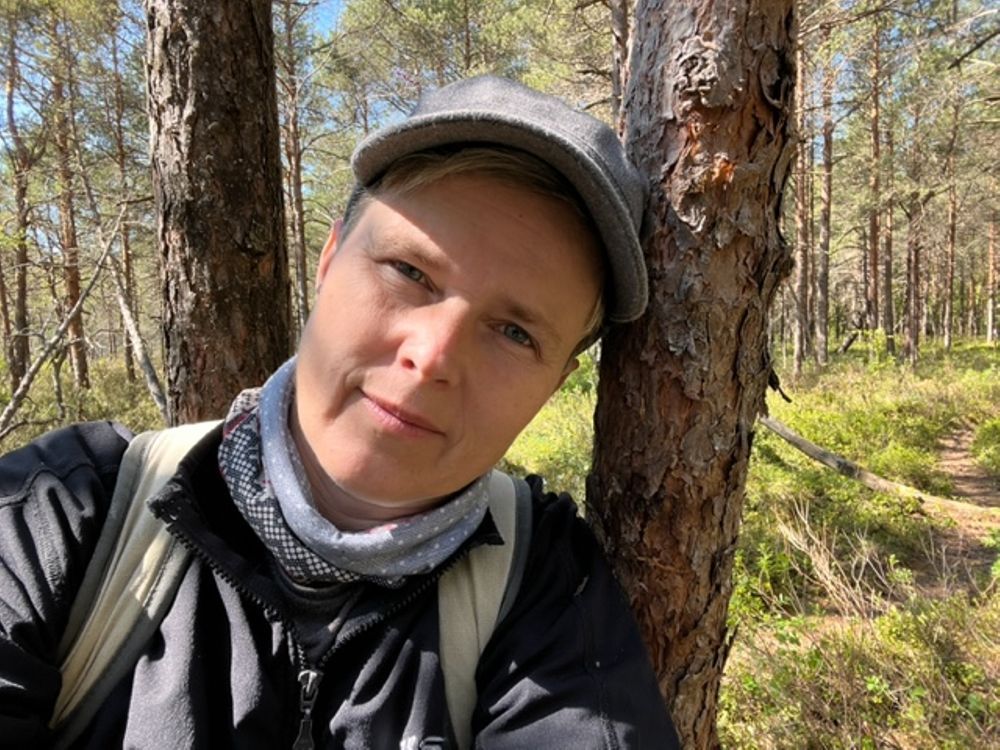
Photography courtesy of Elo Liiv
Marjolijn Dijkman, Netherlands
Marjolijn has been exploring the Ems-Dollard estuary through visits during different periods of the year. She sees the entire estuary as an ecosystem that spans national borders, part of a complex network of interdependent actors and agents, all affecting each other within the estuary and on the land. Her approach considers the landscape as a production site with agriculture, energy production, high-tech companies, and the upcoming aquaculture on the newly created wetland, and also encompasses the processes taking place on the German side of the estuary.
As part of her research, she has visited several history museums in the Groningen area to better understand the changing landscape's cultural history and how people have interacted with the sea throughout history. This includes everything from the villagers living and farming within the wetlands on top of the Wierden to the construction of dikes to block the sea and live and farm behind them to the new construction of more fluid coastlines with open connections to the sea.
“I find the complexity of this area fascinating, and I am really touched by how different factors dramatically affect the ecosystem and the local population. My objective is to comprehend the functioning of this system and all the associated dynamics, including the effects of sedimentation in the water, land subsidence, dredging activities, gas extraction-induced earthquakes, harbour and cruise shipyard activities, and rising sea levels.”
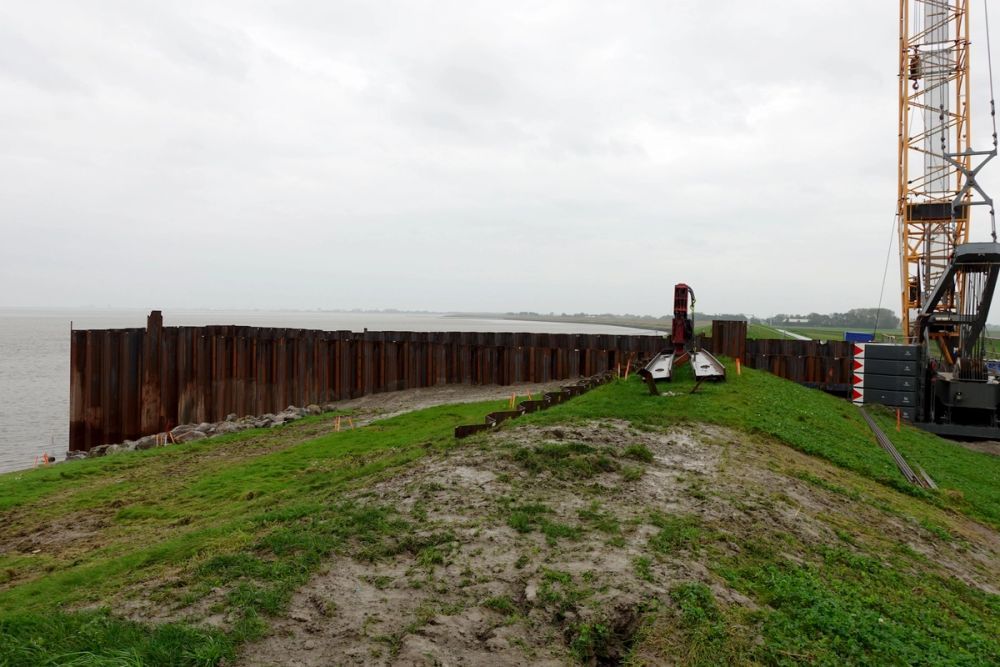
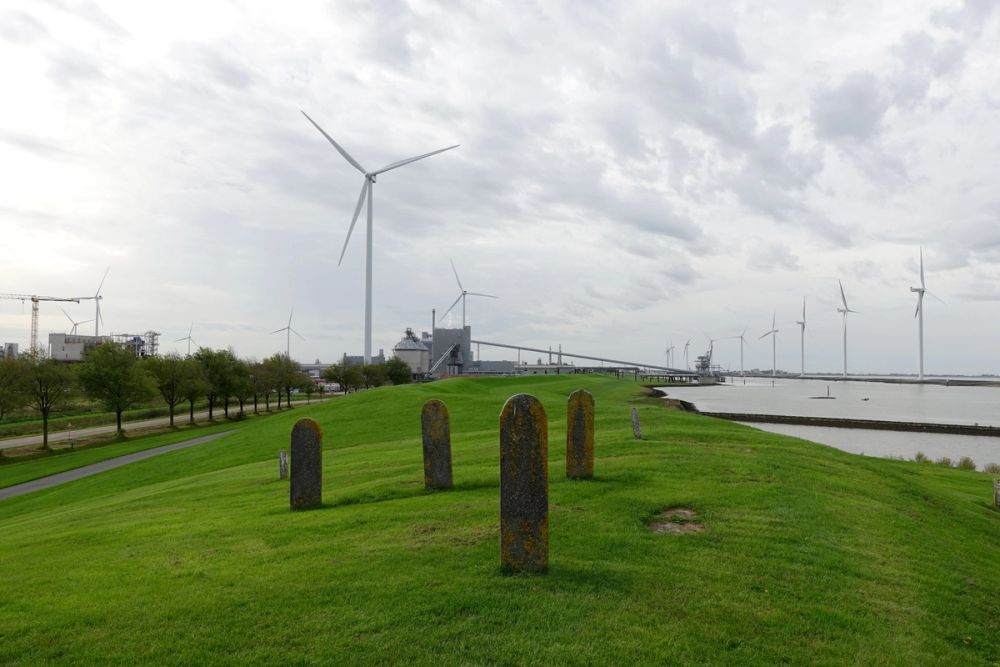
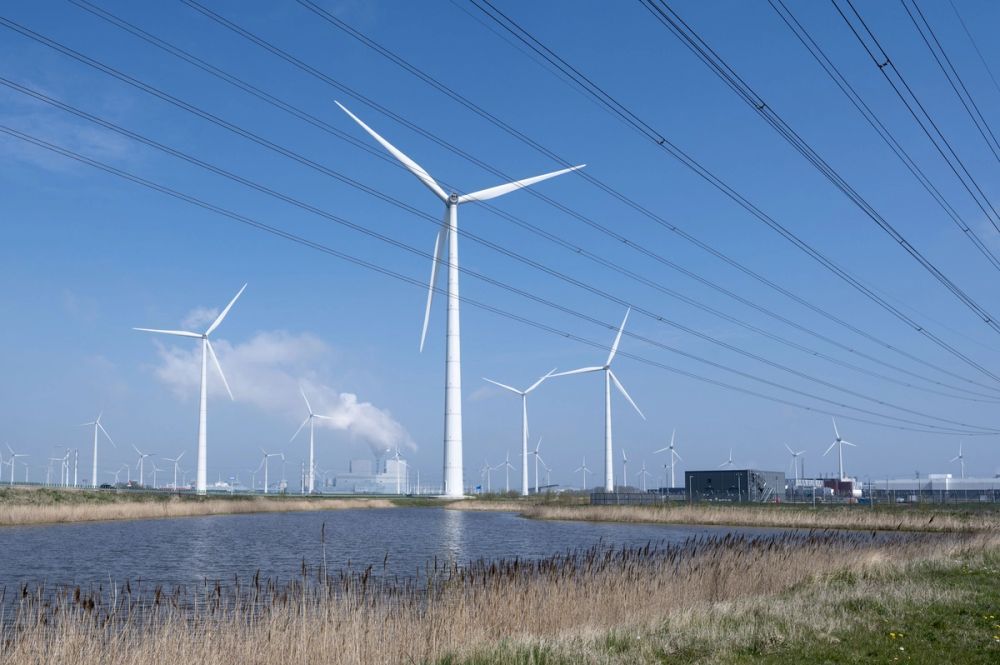
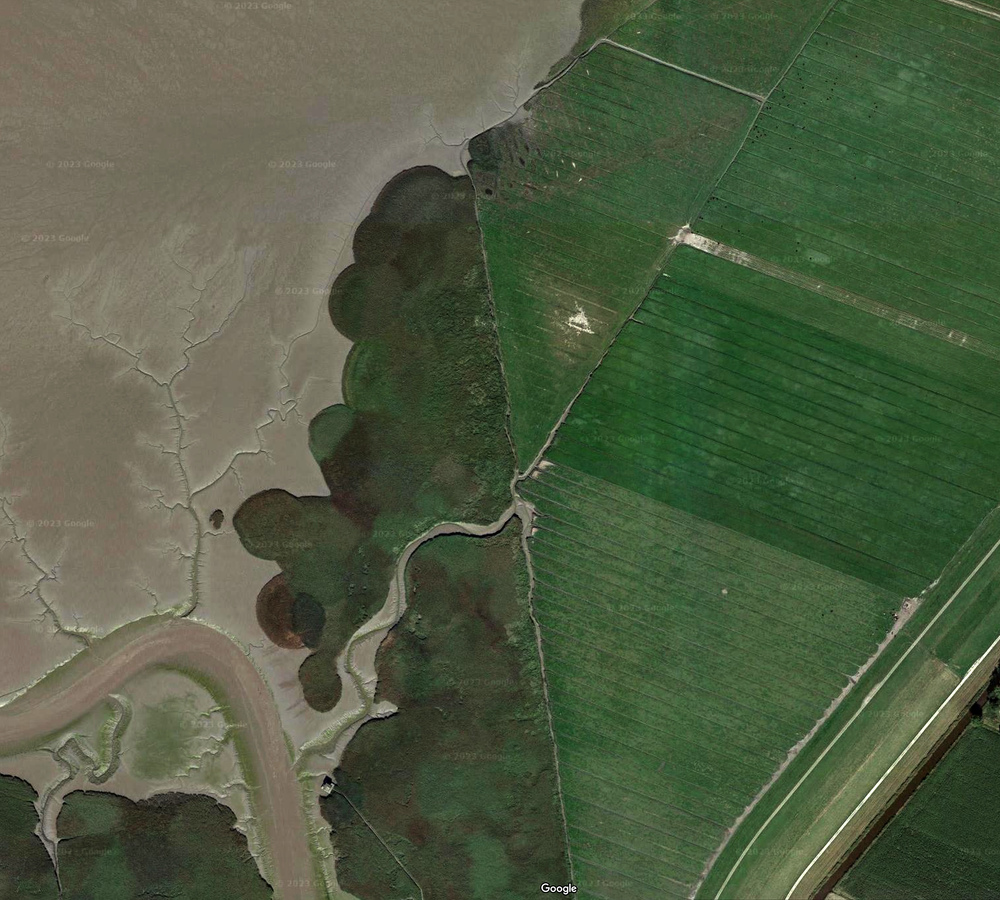
Photos courtesy of Marolijn.
Maria Nalbantova, Bulgaria
Maria has been exploring the Dragoman Marsh site. Located approximately 40 km from Sofia, Dragoman Marsh in Bulgaria is the largest natural karst wetland in the country, situated near the international road and Serbia's border. This marsh boasts rich biodiversity and plays a vital role as a resting point for birds along the Via Aristotelis migration route, offering them a place to rest among the marsh vegetation before continuing their journey
Working with Balkani Wildlife Society, Maria has begun learning and engaging in various activities, such as cutting reeds, assisting with ornithological net untangling, and participating in bird ringing camps. She has started listening to the diverse voices of Dragoman Marsh – the water bull, gray heron, terrapins, dragonflies, carnivorous plants, water lilies, along with the voices of local people, environmentalists, myths, and stories. Maria is working with photo traps, as introduced by Nelly Ivanova from BWS. This method of biodiversity monitoring capture the activity of various marsh inhabitants in their natural habitat, free from human presence. She is also extending prior research into do-it-yourself (DIY) materials and approaches aimed at fostering sustainable production and consumption practices, exploring the creation of 'reed material' using reeds harvested during the mowing season linked to bird ringing camps.
“Dragoman Marsh has gone beyond being a project; its beauty and contradictions have completely captivated me. My interests at the moment mostly focus on plants and herbs native to the region, fluctuations in water levels (the Dragoman Marsh was almost completely drained before political changes in 1989), wildfires (the most recent one in Dragoman Marsh occurred in January 2020, resulting in the destruction of approximately 80% of the vegetation), local traditions and customs, local communities, microorganisms, migration processes, and bird ringing camps.”
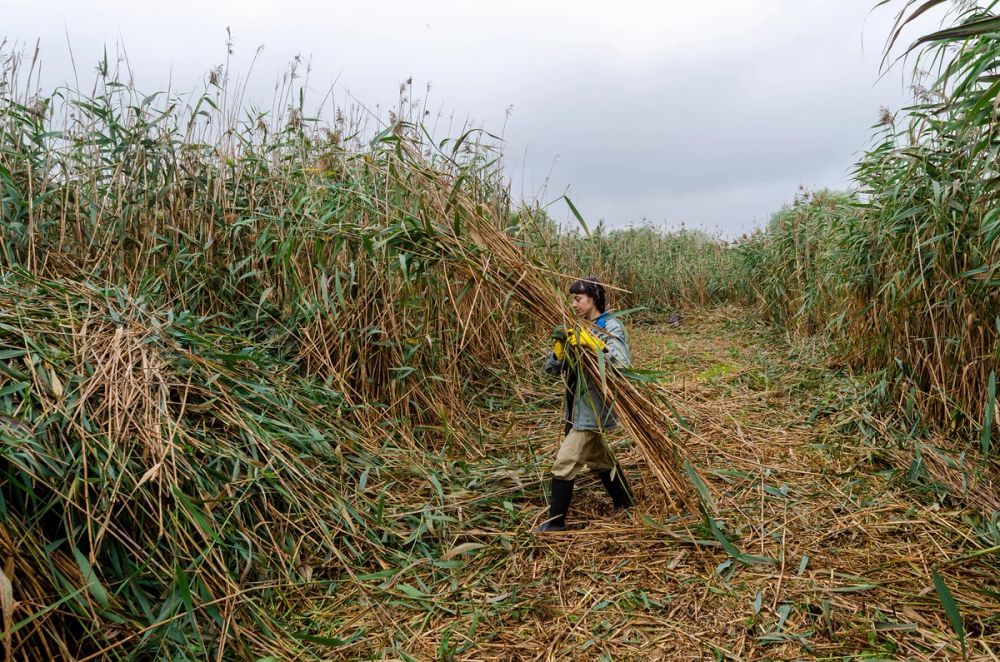
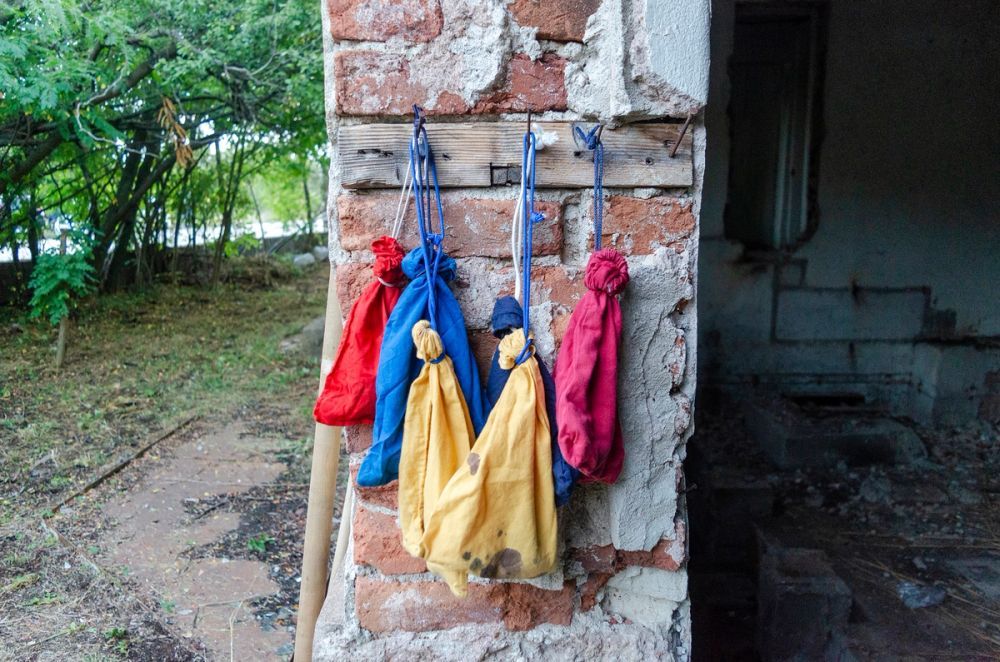
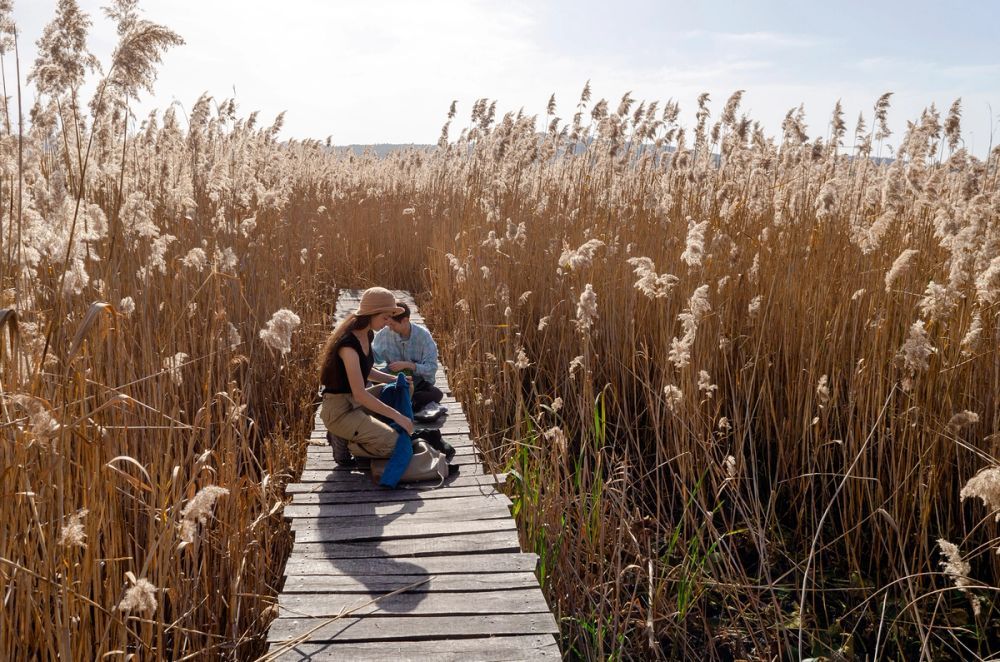
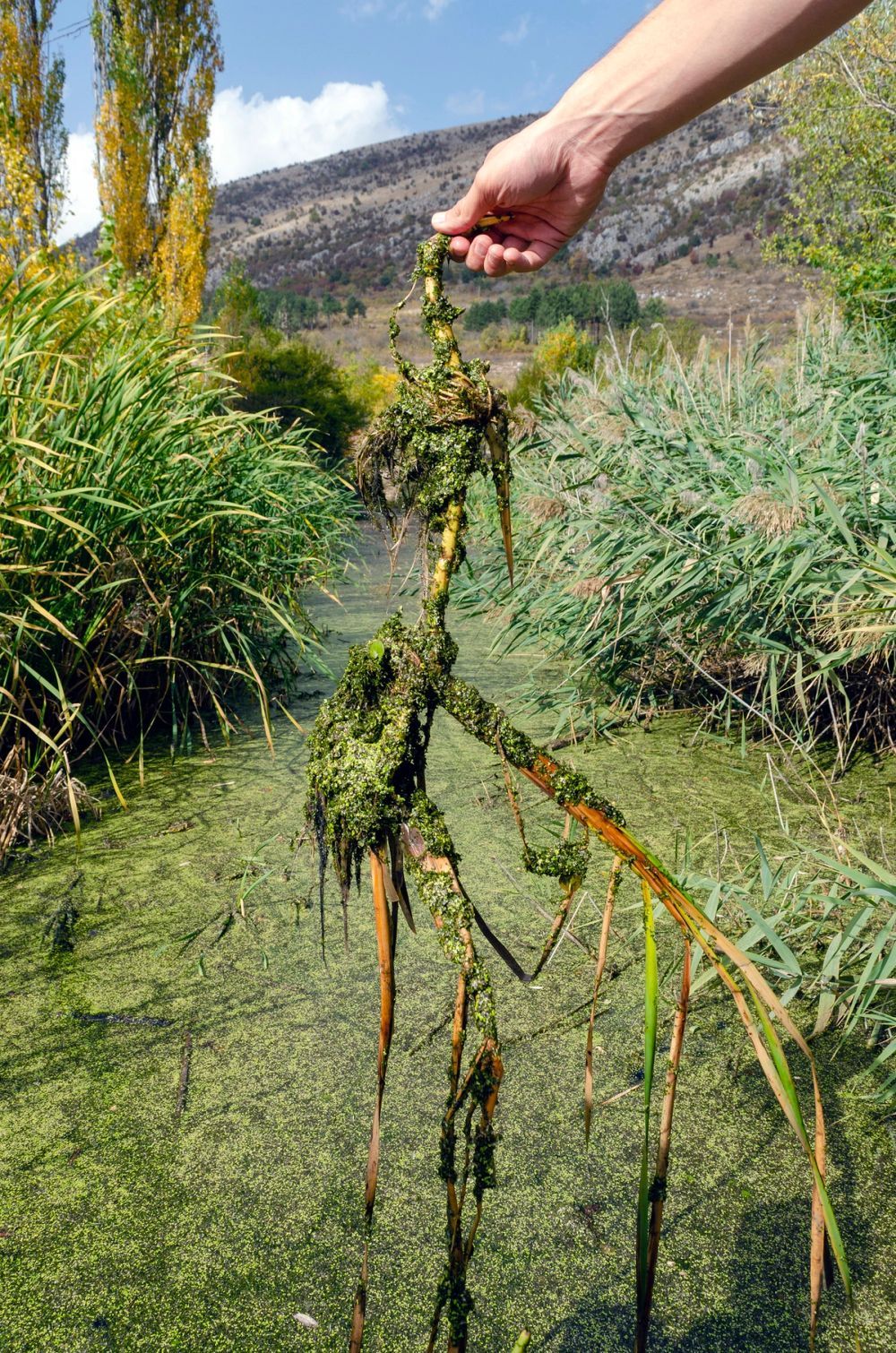
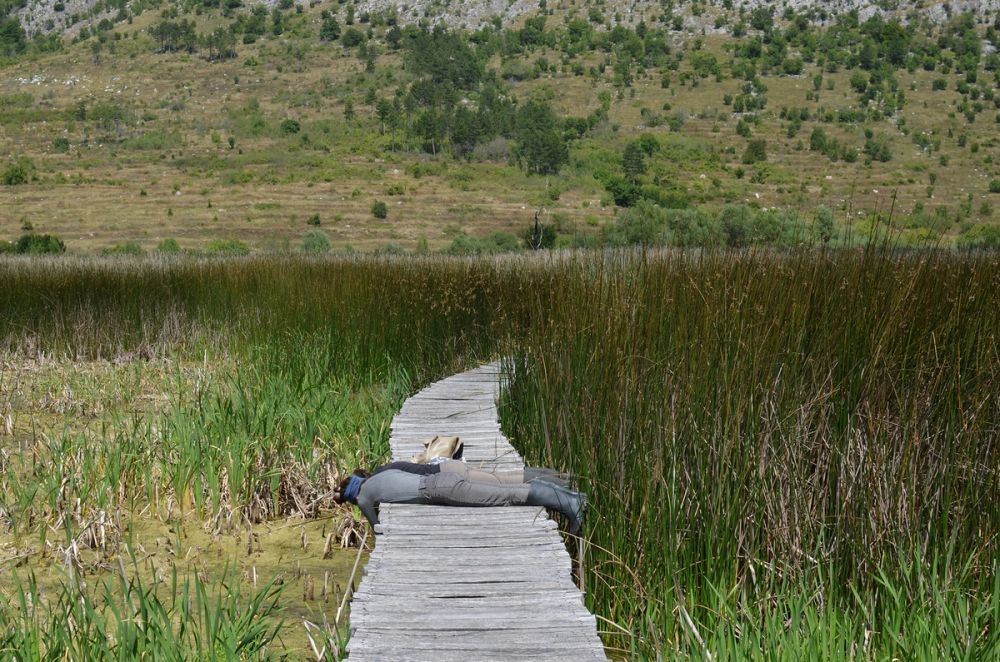
Photography by Miroslava Popova, Atanis Giew, and Antoni Rayzhekov
Claudio Beorchia, Italy
Claudio has been exploring the Italian Action Site, the Venice lagoon. Claudio grew up in the region, studied in Venice and had already taken a few trips on the lagoon. He believed himself to be familiar with the site and felt confident that after his first residency, everything would become clearer and he would have a good picture of the situation and its needs. However, he was surprised that on his initial WaterLANDS engagements with the lagoon, it was different than he expected, with many other aspects than his initial consideration.
“After a few days spent discovering places I had never visited, meeting people who are particularly attached to this environment, I found myself more lost and uncertain than before. Kind of like when you arrive at the “barena”: you get off the boat hesitantly and take your first uncertain steps on that elusive and unsure ground.
This is because there is the Lagoon of the ornithologist, who moves and works in accord with the birds; and there is the Lagoon of the fisherman, for whom the water is both a natural element and an economic resource; there is that of the farmer, who works an almost unreal soil, surrounded by the waters. And then, of course, there is the Lagoon of the tourists, who must discover its exceptionality in the quick time of a holiday; and that of the islanders, for whom this is but the everyday environment.
Each place visited, each person encountered, brings a unique and special perspective. Together, these heterogeneous, partial, even contradictory views reveal the almost ungraspable complexity of the lagoon environment. The current disorientation and uncertainty do not frighten me, on the contrary: these are useful feelings, helping me to erase old concepts and stereotypes I had about this environment, to look at it with fresh, new eyes. For now, then, I enjoy the Lagoon from this kaleidoscope of impressions, confident that they will stimulate insights and good ideas.”
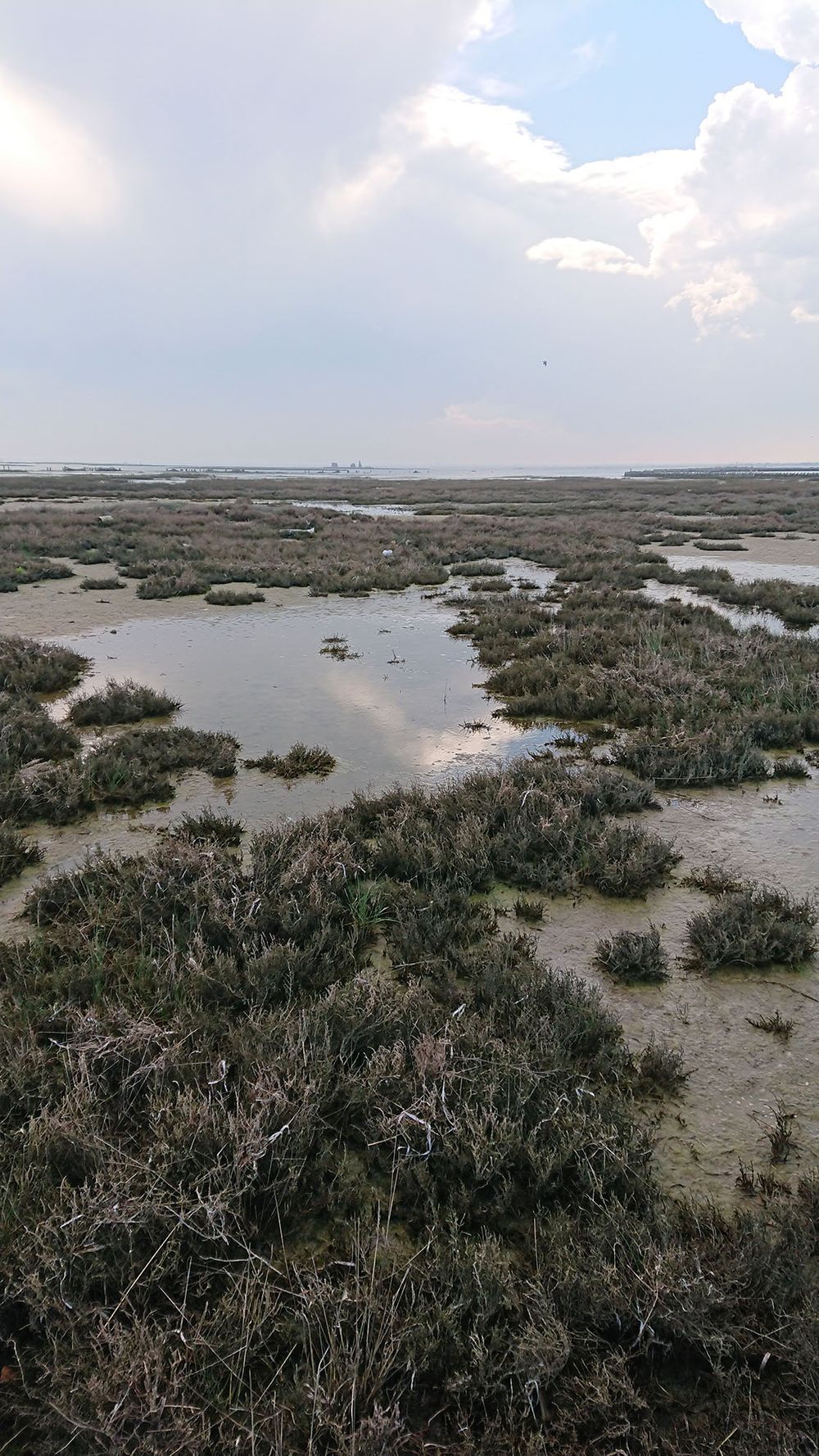
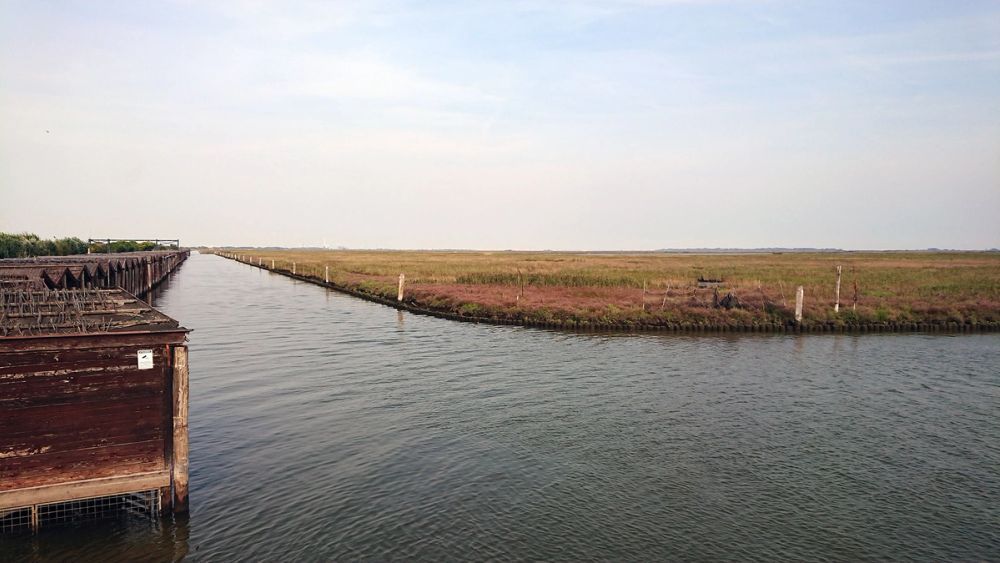
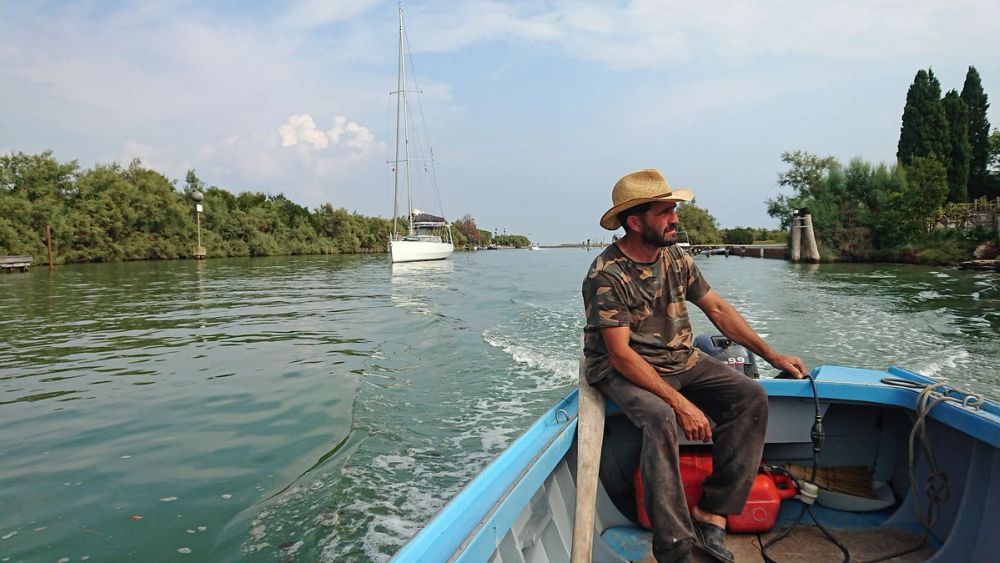
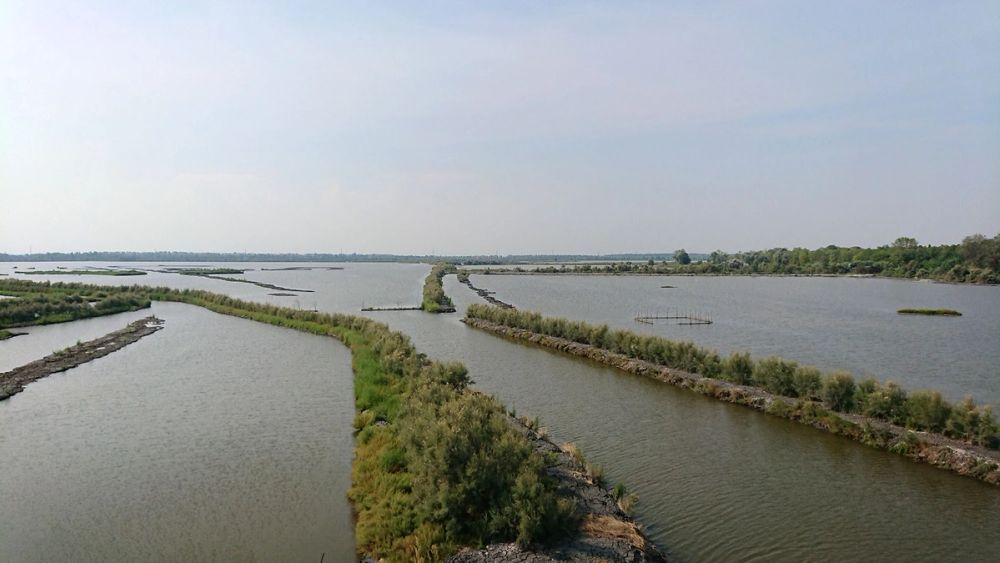
Photography by Claudio
Christine Mackey, Ireland
Christine has been exploring the Cuilcaigh Aneirin site as part of her residency, undertaking field research and "shadowing both human and non-human entities" as part of the project. During her first month, she shadowed the work of ‘others’ to gain an embedded experience of the complex landscape of peatland in Leitrim. She climbed Sliabh an Iarainn amongst other sites with scientists and field botanists working on the WaterLANDS project.
“I observed their work, as they scoped, plotted, named and classified the landscape.
Encountering bare peat, the types of plants growing on these structural formations, where to set foot and where not to, slipping into deep gullies pulled out with both arms. The ‘hags’ markers - naturally occurring erosions sculpted in isolation. Then there is the silence - deep and long unless the wind is brewing up.
I lay out on a calm day on warm moss to reflect on the people who came before us and what they once did here. The plants guide my interest - lichens, sphagnum mosses, heathers, sedges, cranberry and the bilberry or fraocháin. I picked and ate my way across the mountain.
Sphagnum moss was probably an early coloniser of bare terrain, covering it and keeping the area waterlogged. Apart from the science, sphagnum has healing abilities and was used as a wound bandage during the wars. It is this capacity of plants to heal both their own contextual landscape and people that I will continue to explore and inform the trajectory of this work as I move forward with this residency programme."
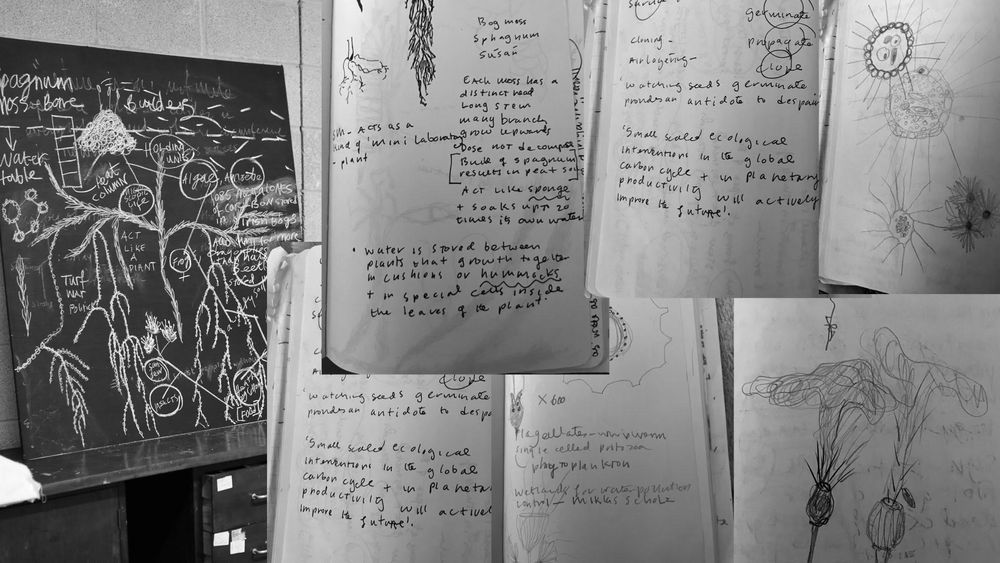
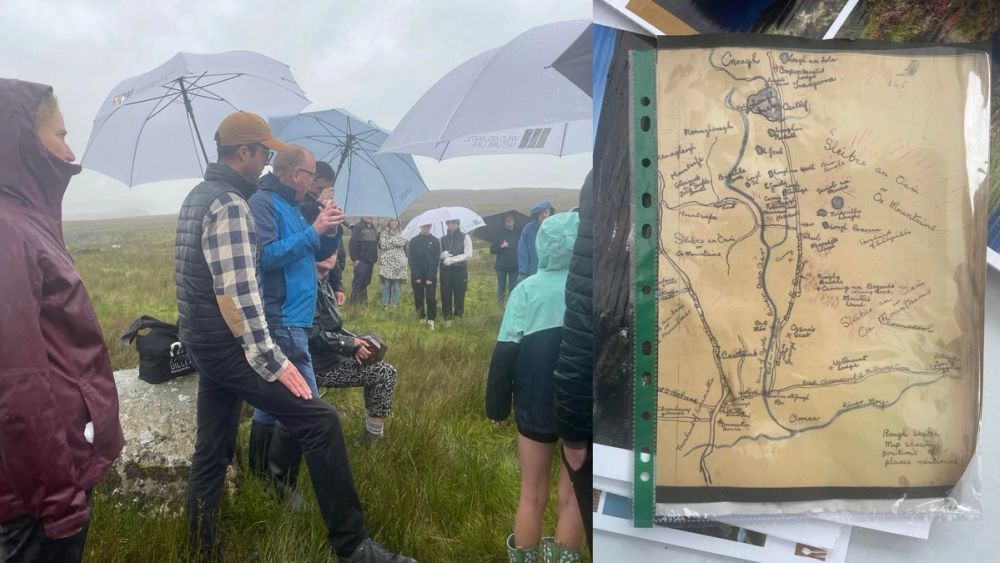
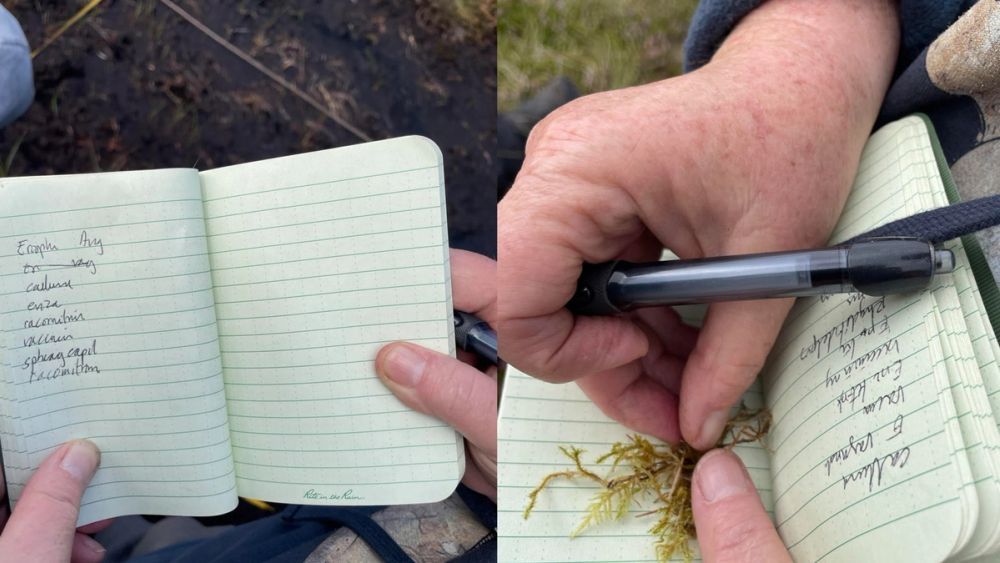
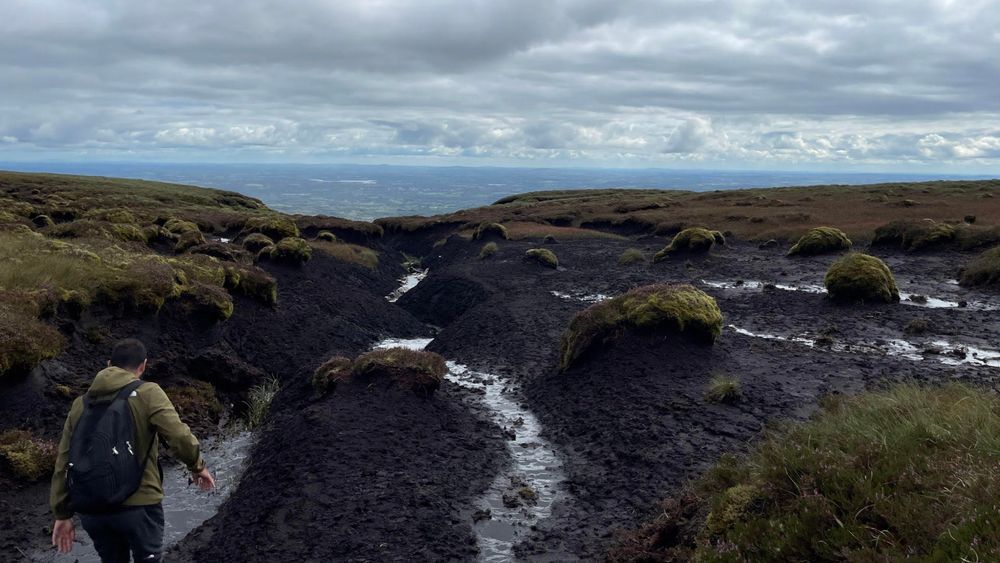
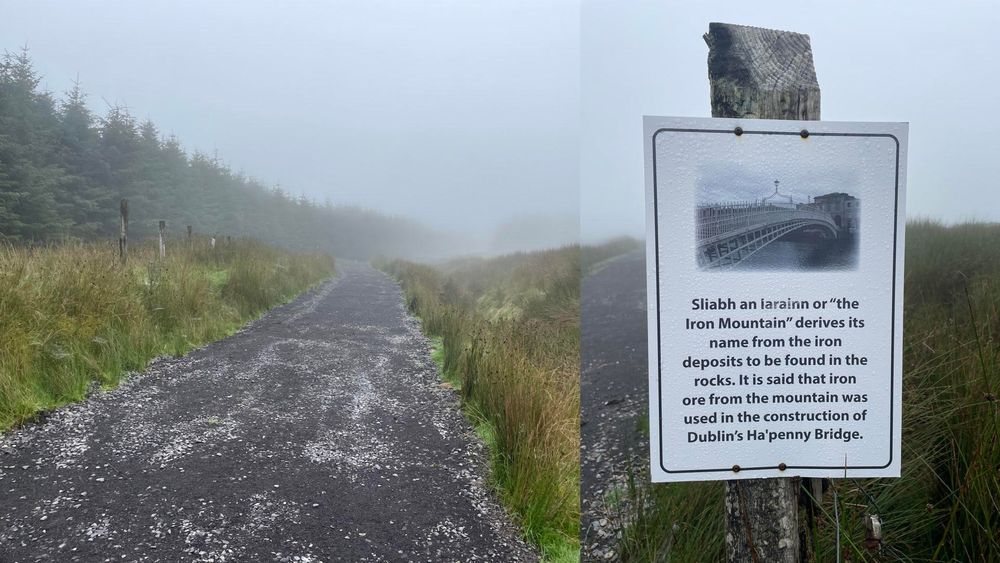
Photos by Christine
Laura Harrington & Feral Practice, UK
Laura and Fiona made their first research trip to the Great North Bog in June 2023. The site is challenging to work with in a sense, because it is so many peatlands spread across a wide expanse of Northern England, each with different characters and challenges. On the trip, they first went to Leeds University to meet the interdisciplinary WaterLANDS team, including hydrologist Richard Grayson, communications and engagement fellow Josh Cohen, ecologist Lee Brown and economist Julia Martin-Ortega. The following day they went on a tour of Denton Moor in Ilkley with Lucy Lee, whose role is community engagement. They spent some time together exploring and talking, visiting relevant exhibitions in Sheffield and some very degraded peatlands around the Peak District. In September they visited Fleet Moss in Yorkshire for a group tour, led by Jenny Sharman, of the experimental restoration that has been going on there for twenty years, and attended a follow on large group meeting with the communications teams from across the site.
“At the first meeting an initial observation is that we were struck by the speed at which the culture around peatland restoration was moving, in contrast to the slowness of peatland processes themselves. More generally, we are especially inspired by ideas around healing and tenderness in relation to the restoration processes we saw, how the materials and objects involved have sculptural similarities to objects and materials used in wound care, and we wonder also if the actions (though very different in scale and technology) might mirror actions made in the tending of human wounds. The flesh of the bog. This focus on touch and tenderness led to our research collaboration being christened with the name of Tenderbog. We are returning to Fleet Moss in February, to collaborate further with Jenny and Josh, and we hope to observe and engage with the contractors who do the physical work of restoration."
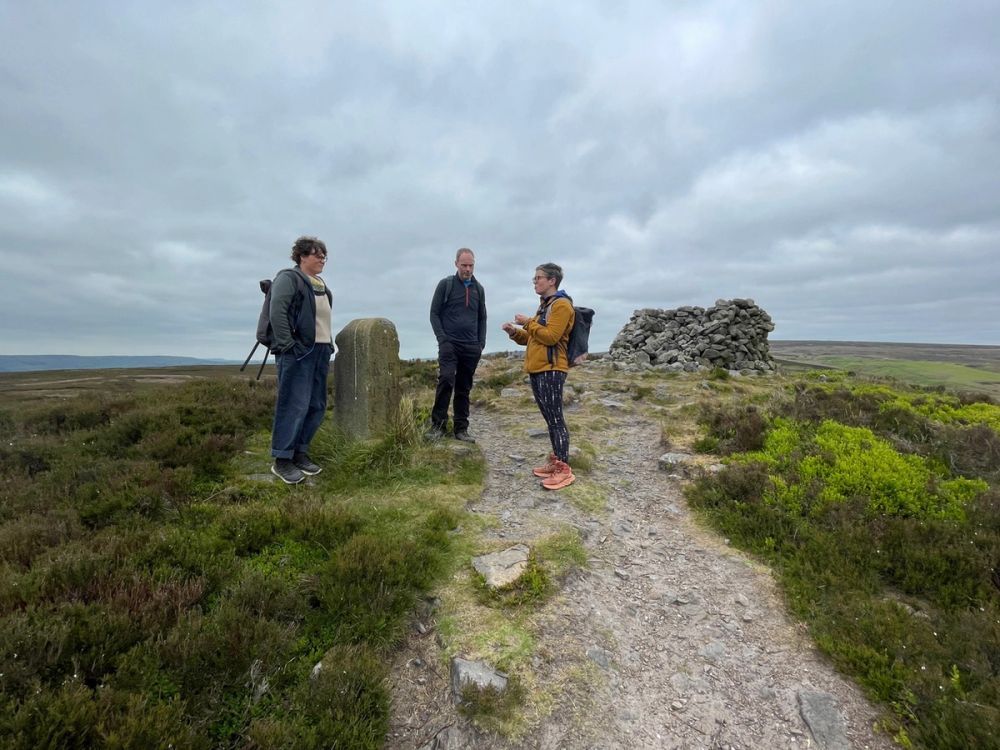
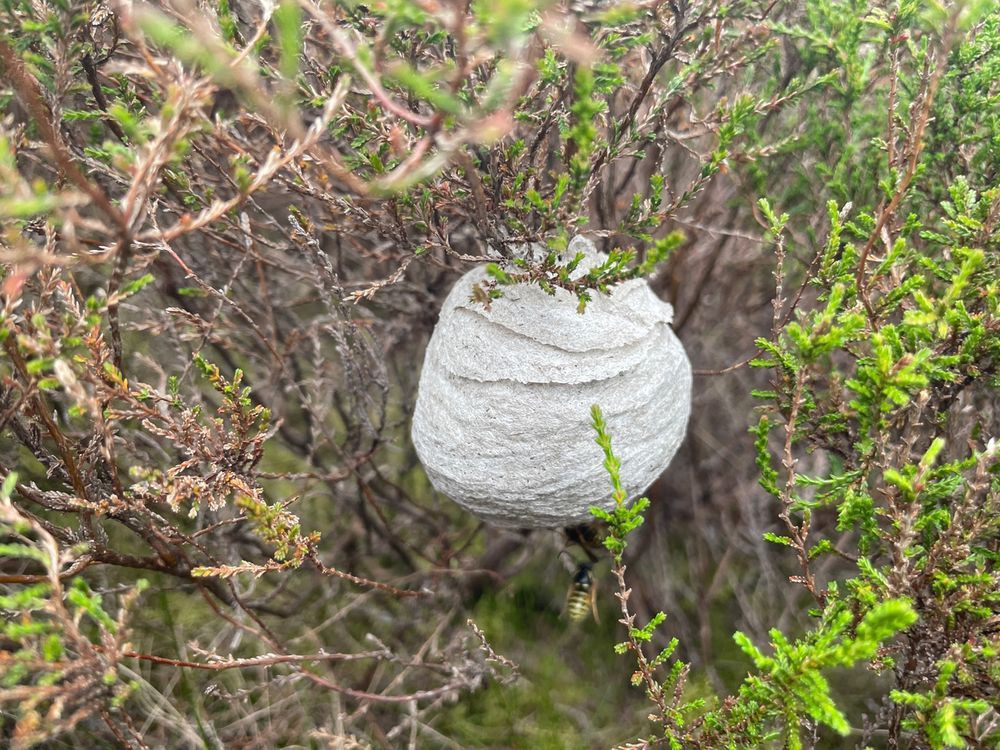
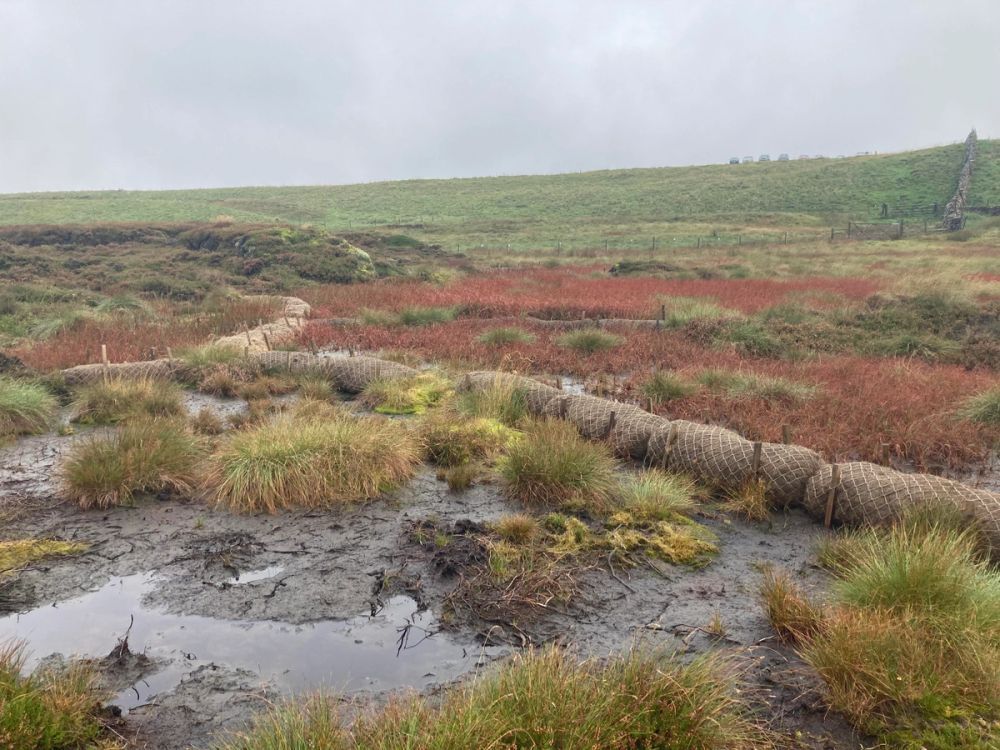
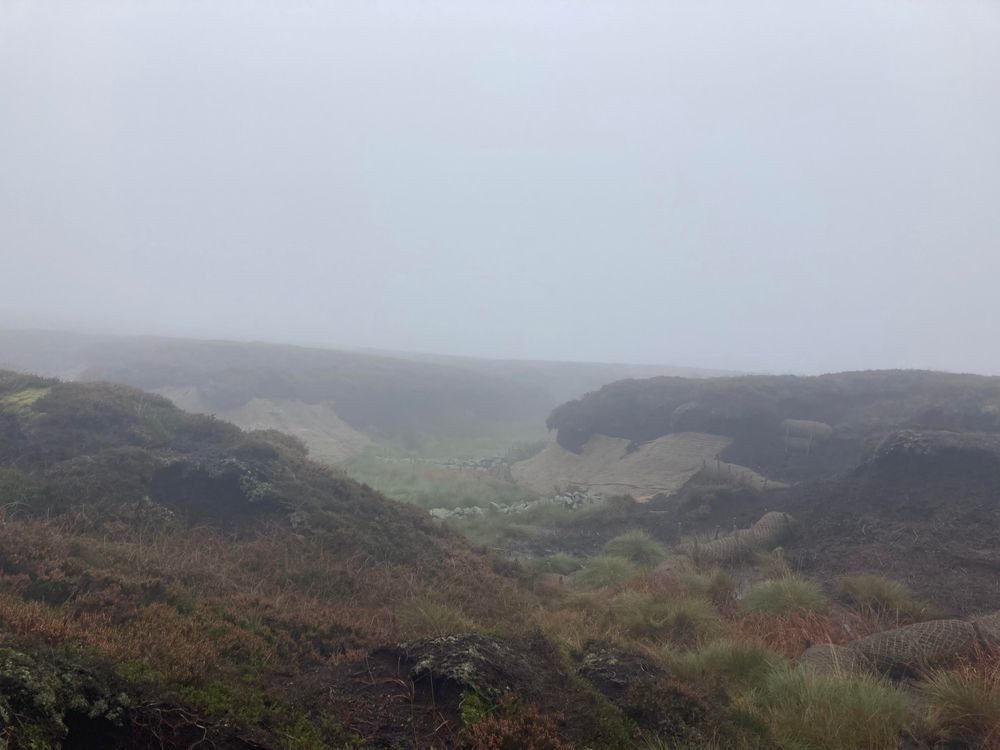
Photos courtesy of Laura Harrington and Feral Practice
